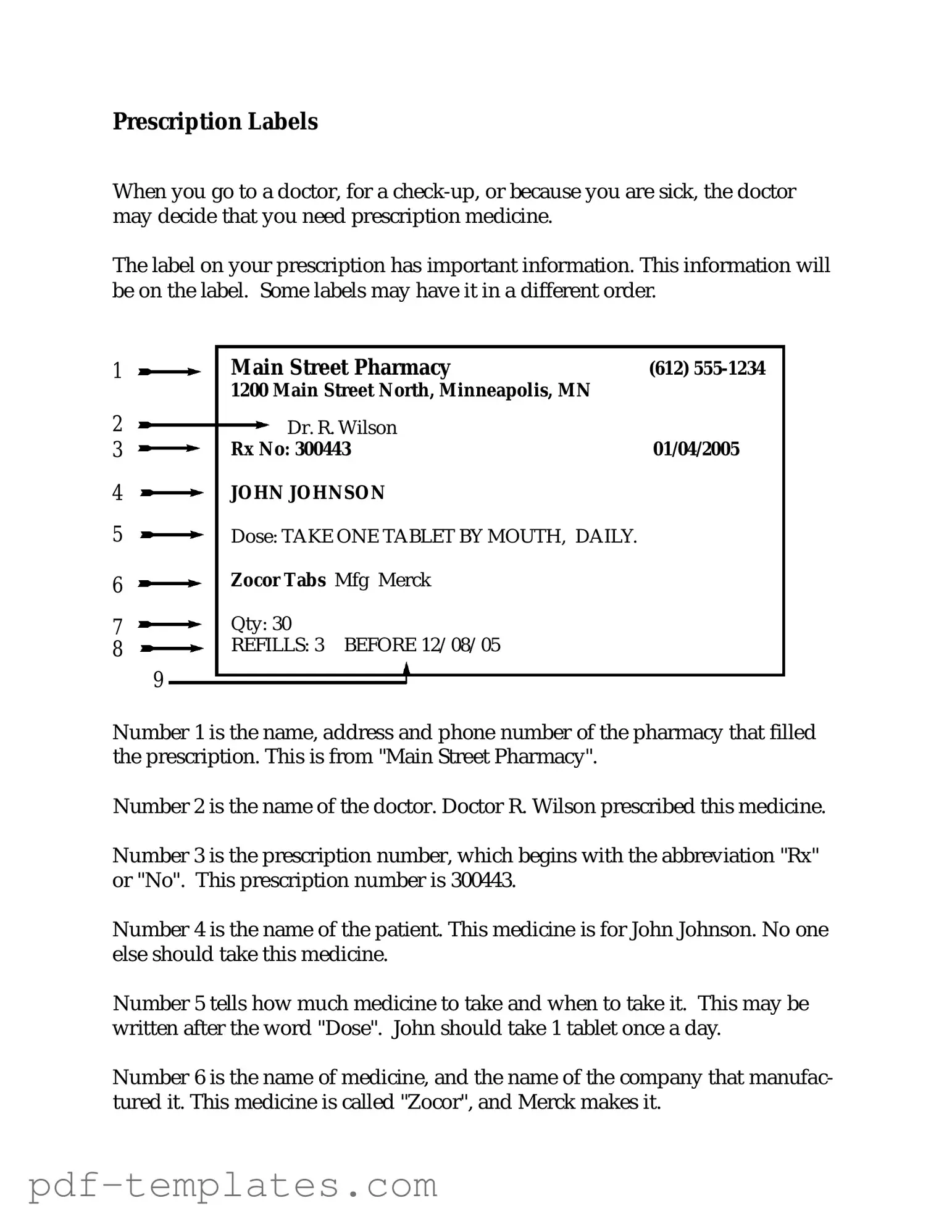The Medication Administration Record (MAR) is similar to the Prescription Label form in that both documents track the administration of medication. The MAR provides a detailed log of when medications are given to patients, including dosage and time, ensuring that healthcare providers can monitor compliance and effectiveness. Like the Prescription Label, the MAR is critical for maintaining accurate records and preventing medication errors.
The Medication Guide serves a similar purpose by providing essential information about a specific medication. This document includes details on potential side effects, proper usage, and contraindications. Both the Medication Guide and the Prescription Label aim to inform patients about their medications, enhancing understanding and safety in usage.
Understanding the various forms used in healthcare, including the Prescription Label, is essential for ensuring patient safety and medication adherence. For comprehensive management of real estate transactions, a All California Forms can also be useful, particularly in situations where quick transfers of property interests may be necessary, paralleling the efficiency needed in medication management.
The Patient Information Leaflet (PIL) is another document that parallels the Prescription Label. The PIL is designed to educate patients about their medications in a clear and accessible manner. It typically covers indications, dosage instructions, and safety information, much like the Prescription Label, which also conveys critical information directly related to the medication prescribed.
The Refill Authorization form is akin to the Prescription Label as it provides instructions for obtaining additional medication. This document outlines the terms under which a patient can refill their prescription, including the number of refills allowed. Both forms are essential in managing a patient’s medication regimen and ensuring they have access to necessary treatments.
The Medication Therapy Management (MTM) plan is another document that resembles the Prescription Label. The MTM plan outlines a strategy for managing a patient’s medications to optimize therapeutic outcomes. Like the Prescription Label, it focuses on ensuring that patients receive the correct medications and understand their treatment plans.
The Controlled Substance Prescription form is similar to the Prescription Label in that it governs the dispensing of medications that have a high potential for abuse. This document contains specific information about the medication, including dosage and patient information. Both forms are crucial for ensuring that controlled substances are prescribed and dispensed safely and legally.
The Lab Test Order form also bears similarities to the Prescription Label. This document is used to request specific laboratory tests to monitor a patient’s health or medication effectiveness. Both the Lab Test Order and the Prescription Label are part of the broader healthcare process, contributing to informed decision-making regarding a patient’s treatment.
Finally, the Clinical Summary document shares characteristics with the Prescription Label. This summary provides an overview of a patient's health status, including medications prescribed and treatment plans. Both documents serve to communicate important health information, ensuring that all healthcare providers involved in a patient's care are on the same page.
